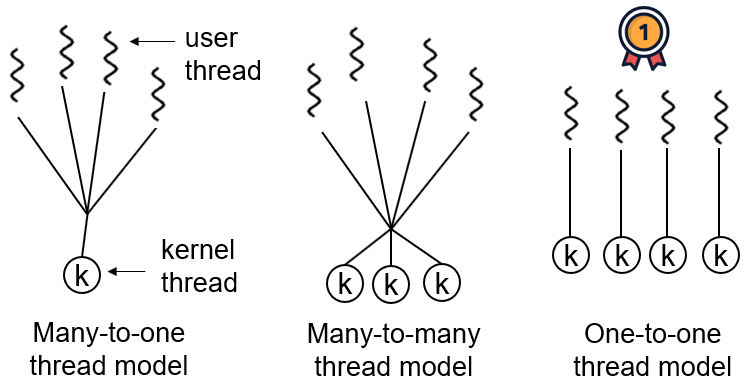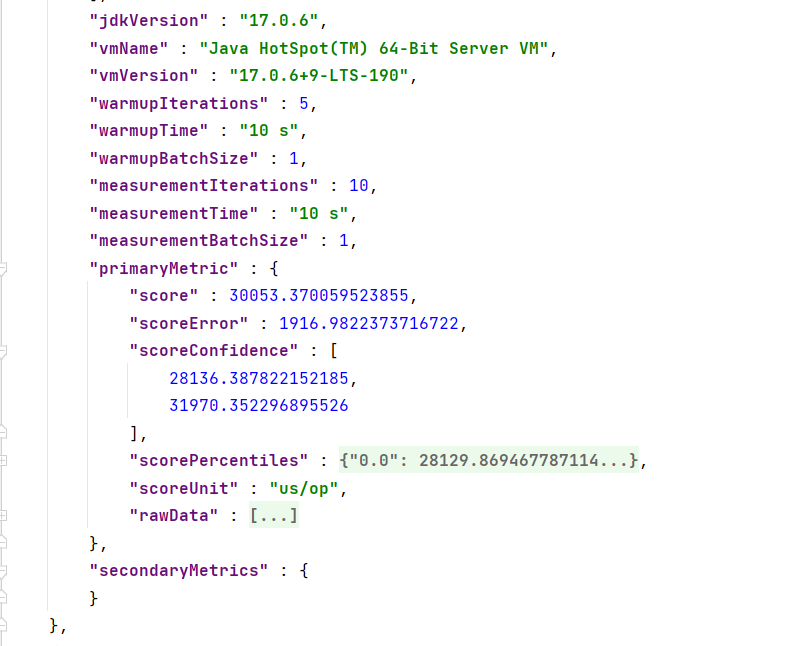JavaSe:抽象类-接口
0529
属性赋值
- 可以对象初始化的位置:
- 默认初始化
- 显式初始化
- 在代码块中赋值
- 构造器初始化
- 通过对象 ,(A.age)赋值
- 先后顺序按上面的 1 2 3 4 5 进行(静态代码块 优先于非静态代码块)
native关键字
- 表明接下来要调用底层的C/C++代码
Final关键字
-
final用来修饰类、方法、 变量、
-
final修饰方法
- 方法不能重写
- 如Object中的getClass() ,修饰为final
-
final修饰类
- 此类不能被继承(如String、String Buffer、System)
-
final修饰属性 (常量一般用大写字母表示 eg: WIDTH)
- 此时的“变量”称为常量(C++ const)
- 可以赋值的位置:
- 默认初始化
- 显式初始化
- 构造器初始化
- 代码块初始化
-
final修饰局部变量
-
就是常量,不再能进行赋值
-
final修饰形参时, 相当于传入的是个常量
1
2
3
4void f(final int a )
{
System.out.println(a);
}
-
-
final 修饰对象
-
虽然对象被修饰为了final ,但是如果对象的属性是变量,则依然可以赋值
1
2
3
4//以下代码编译通过
final Person p=("dd",12);
// public String name;
p.name="dddd";
-
static final
用来修饰属性,全局常量
代码
1 | package src.SUMMER_java; |
抽象类与接口
abstract关键字
- 用来修饰结构、类、方法
- 🎈abstract修饰类:抽象类
- 此类无法实例化
- 抽象类中一定有构造器,便于子类对象实例化
- 开发中,都会提供抽象类的子类,让子类对象实例化,完成相关操作。
- 抽象类中不一定有抽象方法。
- 🎈abstract修饰方法
- 抽象方法只有声明,没有方法体。
- 具有抽象方法的类必须用abstract修饰,必须是抽象类。
- 如果抽象类被继承
- 如果子类没有重写父类的抽象方法,则子类也是抽象类,需要用abstract修饰。
- 如果子类重写了父类的所有的抽象方法,则子类可以实例化对象。
- 🎈注意点
- 不能用来修饰属性、构造器、(构造器只能重载)
- 不能用来修饰私有方法、静态方法(abstract修饰的必须要子类重写,但是private不允许子类访问,逻辑相冲突,因此abstract不能修饰私有方法)
- 不能修饰 被修饰为final(不能重写) 的方法.(逻辑冲突)
抽象类匿名对象
1 | package src.SUMMER_java; |
模板方法设计模式
- 模板方法设计模式(TemplateMethod)了解即可
解决的问题:
- 当功能内部一部分是确定的,一部分是不确定的,这时候可以将不确定的部分暴露出去,让子类实现。
- 即当软件实现一个算法时,整体步骤很固定,通用,这些步骤已经在父类中写好了,但是某些部分易变,易变部分可以单独抽出来,供不同子类实现,这是一种模板模式。
1 | abstract class TemplateTest { |
接口Interface
💎接口与类的对比:
-
Java中接口与类属于并列的结构,类中强调单继承,一个类可以实现多个接口,一定程度上解决了类的单继承的局限性。
-
继承: is- a ,接口实现的仅仅是具有一些共同的特征,继承强调的是“是不是的问题”,接口强调的是“能不能”的关系。
✨定义
-
接口中的方法也是默认被修饰为public static final(注意不能再改变)
-
JDK7 以前,只能定义全局常量和抽象方法,
-
全局常量,public static final的 可以省略,
1
2
3
4
5
6
7
8
9
10
11
12
13package src.SUMMER_java;
public class Day0529 {
public static void main(String[] args)
{
System.out.println(flyable.HIGHEST_SPEED); System.out.println(flyable.MIN_SPEED);
}
}
interface flyable {
public static final int HIGHEST_SPEED = 7900;
int MIN_SPEED = 0;
}
-
-
JDK8以后,还可以定义静态方法和默认方法
-
接口中不可以定义构造器,因此接口无法实例化对象。
-
Java开发中,接口通过让类去实现。
-
Java中一个类可以实现多个接口,弥补了单继承的局限性。
-
接口的多实现:
-
接口与接口之间可以继承并且可以多继承
-
类可以implements多个接口
-
类可以同时继承父类并且implements接口。
1
2
3
4
5
6
7
8
9
10
11
12
13
14
15
16
17
18
19
20
21
22
23
24
25
26
27
28
29
30
31
32
33
34
35
36
37
38
39
40
41
42
43
44
45
46
47
48
49
50
51
52
53
54
55
56
57package src.SUMMER_java;
public class Day0529 {
public static void main(String[] args) {
System.out.println(flyable.HIGHEST_SPEED);
System.out.println(flyable.MIN_SPEED);
}
}
interface flyable {
public static final int HIGHEST_SPEED = 7900;
int MIN_SPEED = 0;
// public static final int MIN_SPEED = 0;
// public void stop(():
void stop();
void fly();
}
interface runable {
void run();
}
interface afford {
public static final int price = 6666666;
}
class Plane implements flyable { // implements 使生效;贯彻;执行;实施
public void stop() {
System.out.println("PLANE STOP");
}
public void fly() {
System.out.println("PLANE FLY");
}
public void run() {
System.out.println("PLANE RUN");
}
}
class Kite implements flyable {
public void stop() {
System.out.println("KITE- STOP");
}
public void fly() {
System.out.println("KITE- FLY");
}
}
class Boeing extends Plane implements afford, runable {
}
-
接口多态性
- 只要是implements了flyable 接口的非抽象类的对象都可以作为形参传入
1 | package src.SUMMER_java; |
接口匿名对象
1 | package src.SUMMER_java; |
代理模式
✨介绍:代理模式是Java开发中使用的较多的一种设计模式,代码模式就是为其他的对象提供一种代理以控制对这个对象的访问.
✨分类
- 静态代理:静态生成代理类
- 动态代理:动态生成代理类
1 | package src.SUMMER_java; |
工厂模式
✨描述:为了达到创建者与调用者的分离,将创建对象的过程高度屏蔽隔离起来,达到提高灵活性的目的。
-
无工厂模式
1
2
3
4
5
6
7
8
9
10
11
12
13
14
15
16
17
18
19
20package src.SUMMER_java;
public class Day0529 {
public static void main(String[] args) {
car c1 = new Aodi();
car c2 = new Biyadi();
}
}
interface car {
}
class Aodi implements car {
}
class Biyadi implements car {
} -
简单工厂模式
🎈简单工厂又称静态工厂
1
2
3
4
5
6
7
8
9
10
11class CarFactory {//工厂类
public static void getCar(String type) {
if (type == "Audi") {
return new Audi();
} else if (type == "biyadi") {
return new biyadi();
} else
return null;
}
} -
工厂方法模式
- 涉及反射
-
抽象工厂模式
- 复杂程度更高
Java 8中接口的新特性
-
可以为接口添加静态方法和默认方法。从技术角度来说,这是完
全合法的,只是它看起来违反了接口作为一个抽象定义的理念。
🎈静态方法:
- 使用 static 关键字修饰。可以通过接口直接调用静态方法,并执行
其方法体。我们经常在相互一起使用的类中使用静态方法。你可以在标准库中
找到像Collection/Collections或者Path/Paths这样成对的接口和类。
-
接口中定义的静态方法只能通过接口调用
(使interface的作用类似工具类)
🎈默认方法:
- 默认方法使用 default 关键字修饰。可以通过实现类对象来调用。
我们在已有的接口中提供新方法的同时,还保持了与旧版本代码的兼容性。
比如:java 8 API中对Collection、List、Comparator等接口提供了丰富的默认
方法。
- 如果类重写了默认方法,那么调用时会调用重写的方法
- 重写方法的调用顺序:自己的>父类的>接口的
- 如果实现类 实现了多个接口中且接口中定义了同名同参数的方法,如果实现类没有重写方法,那么⚠error(接口冲突),类似于(c++菱形继承问题)
1 | package src.SUMMER_java; |
内部类
🎈定义:可以将一个类的定义放在另一个类的内部,这就是内部类(Inner class).
-
当一个事物的内部,还有一个部分需要一个完整的结构进行描述,而这个内部的完整的结构又只为外部事物提供服务,那么整个内部的完整结构最好使用内部类
-
在Java中,允许一个类的定义位于另一个类的内部,前者称为内部类,后者
称为外部类。
-
Inner class一般用在定义它的类或语句块之内,在外部引用它时必须给出完整的名称。
🎈分类:
- 成员内部类(static成员内部类和非static成员内部类)
- 局部内部类(不谈修饰符)、匿名内部类










